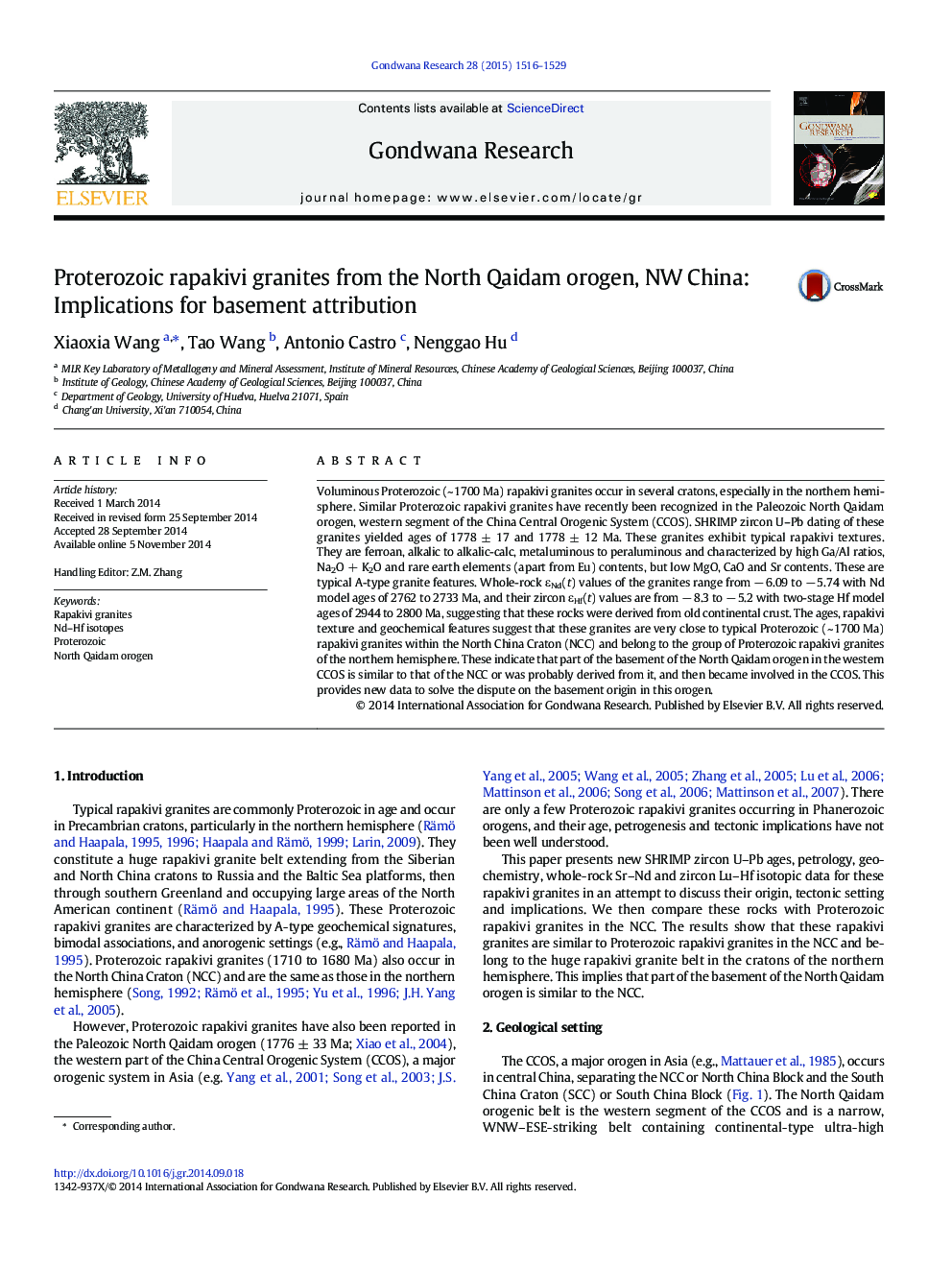| Article ID | Journal | Published Year | Pages | File Type |
|---|---|---|---|---|
| 4726705 | Gondwana Research | 2015 | 14 Pages |
•Typical 1.78Ga rapakivi granites occur in the Paleozoic North Qaidam Orogen;•They similar to the rapakivi granites in the North China Craton (NCC);•These evidences show the basement of the orogen similar to that of the NCC.
Voluminous Proterozoic (~ 1700 Ma) rapakivi granites occur in several cratons, especially in the northern hemisphere. Similar Proterozoic rapakivi granites have recently been recognized in the Paleozoic North Qaidam orogen, western segment of the China Central Orogenic System (CCOS). SHRIMP zircon U–Pb dating of these granites yielded ages of 1778 ± 17 and 1778 ± 12 Ma. These granites exhibit typical rapakivi textures. They are ferroan, alkalic to alkalic-calc, metaluminous to peraluminous and characterized by high Ga/Al ratios, Na2O + K2O and rare earth elements (apart from Eu) contents, but low MgO, CaO and Sr contents. These are typical A-type granite features. Whole-rock εNd(t) values of the granites range from − 6.09 to − 5.74 with Nd model ages of 2762 to 2733 Ma, and their zircon εHf(t) values are from − 8.3 to − 5.2 with two-stage Hf model ages of 2944 to 2800 Ma, suggesting that these rocks were derived from old continental crust. The ages, rapakivi texture and geochemical features suggest that these granites are very close to typical Proterozoic (~ 1700 Ma) rapakivi granites within the North China Craton (NCC) and belong to the group of Proterozoic rapakivi granites of the northern hemisphere. These indicate that part of the basement of the North Qaidam orogen in the western CCOS is similar to that of the NCC or was probably derived from it, and then became involved in the CCOS. This provides new data to solve the dispute on the basement origin in this orogen.
Graphical abstractFigure optionsDownload full-size imageDownload as PowerPoint slide
